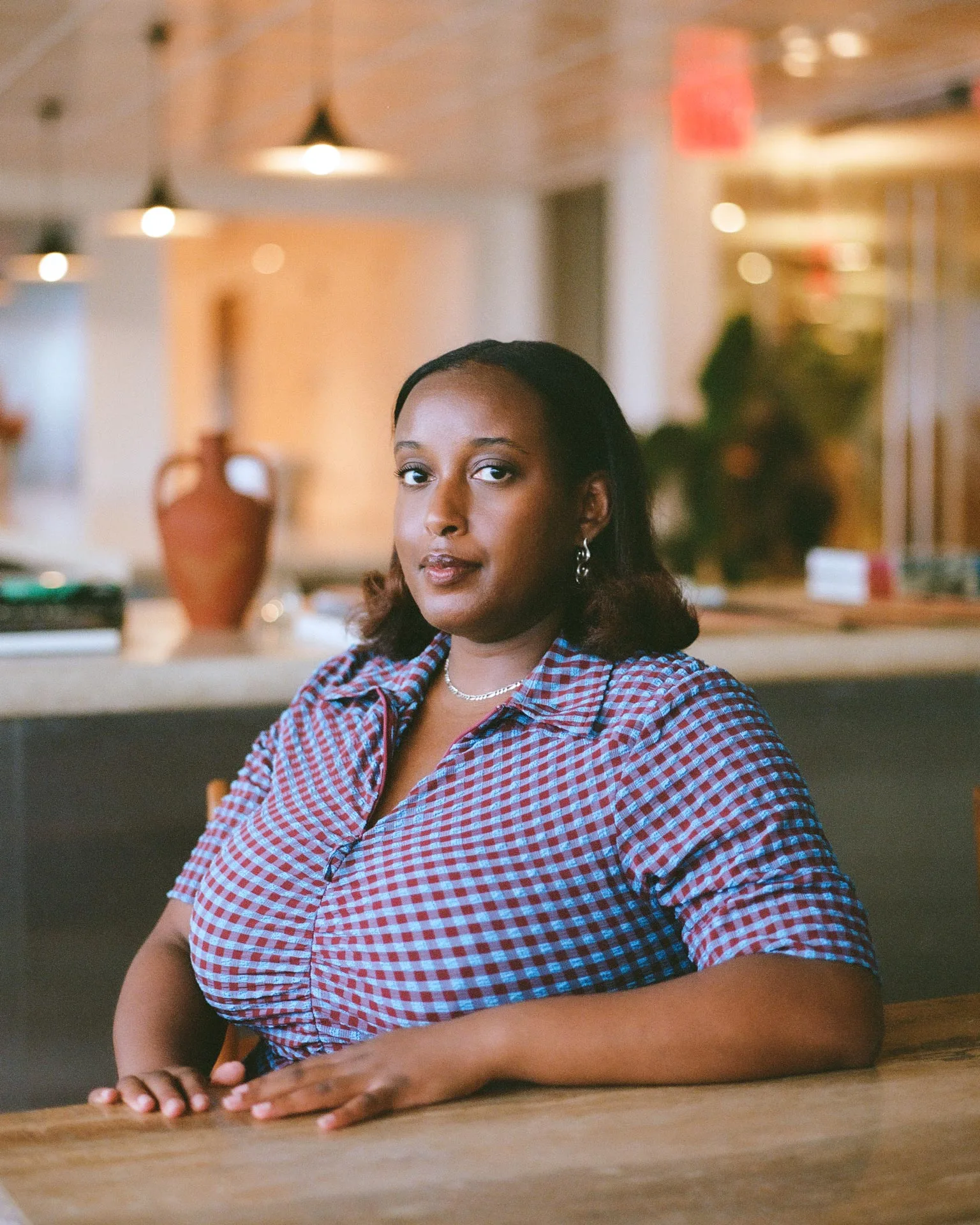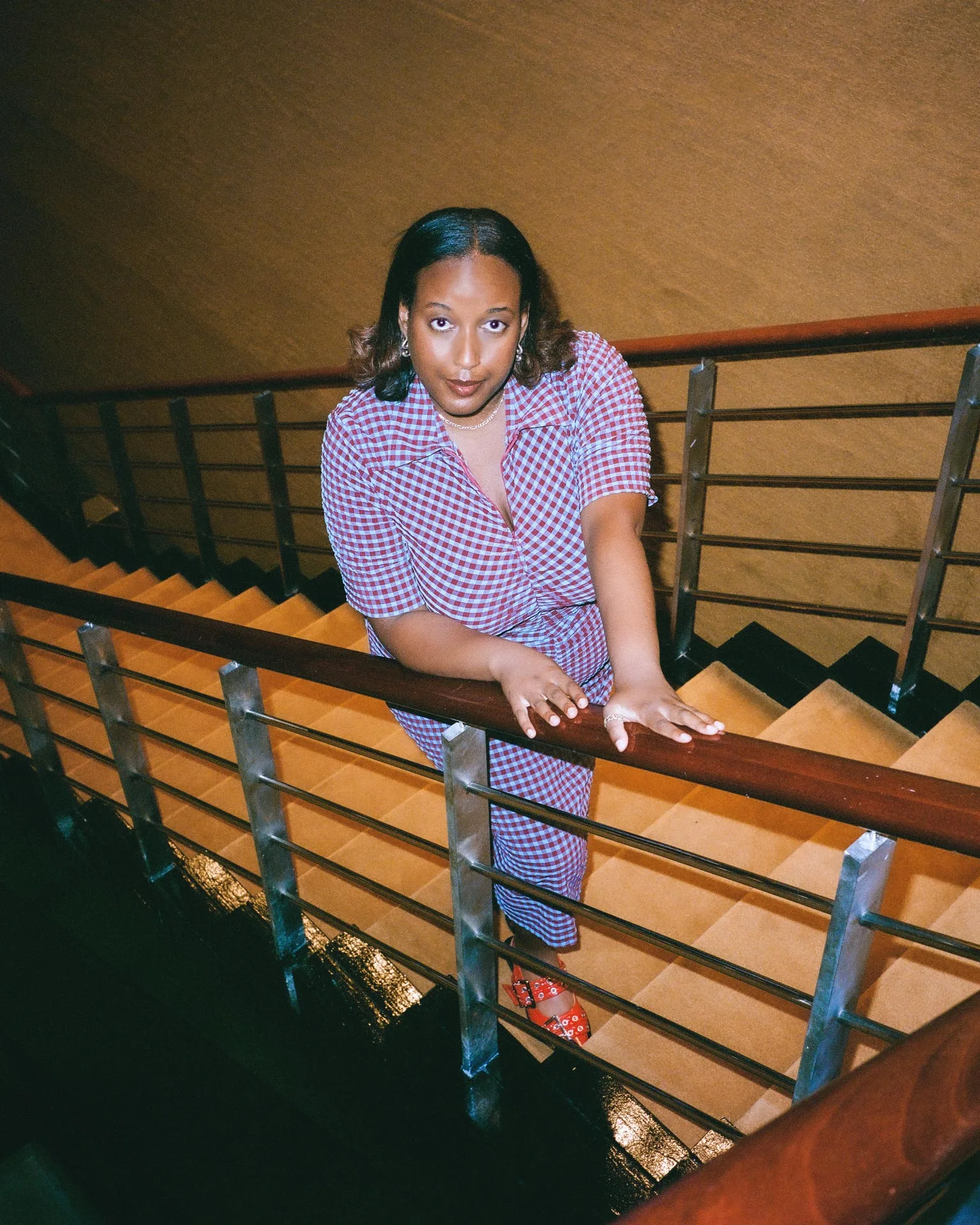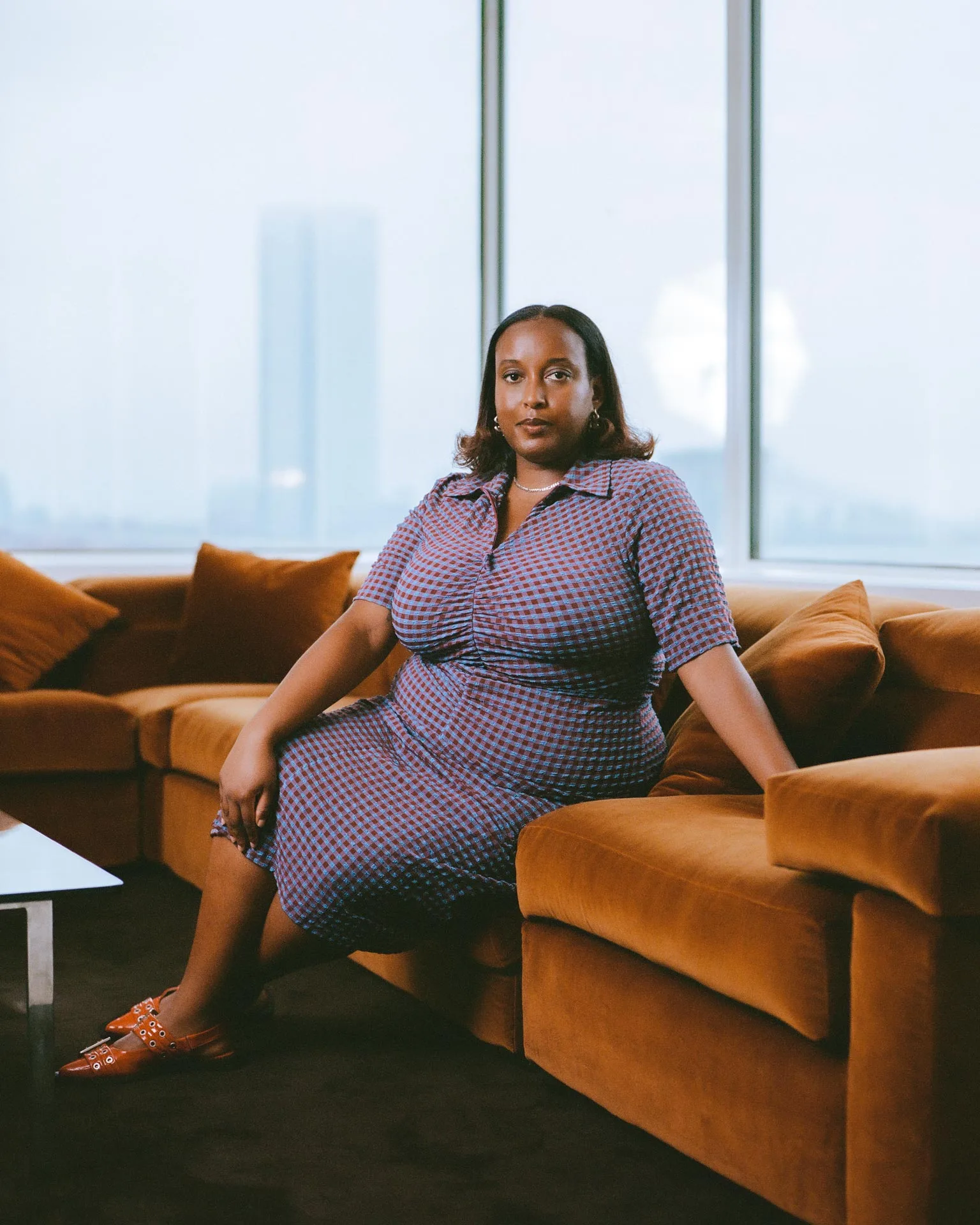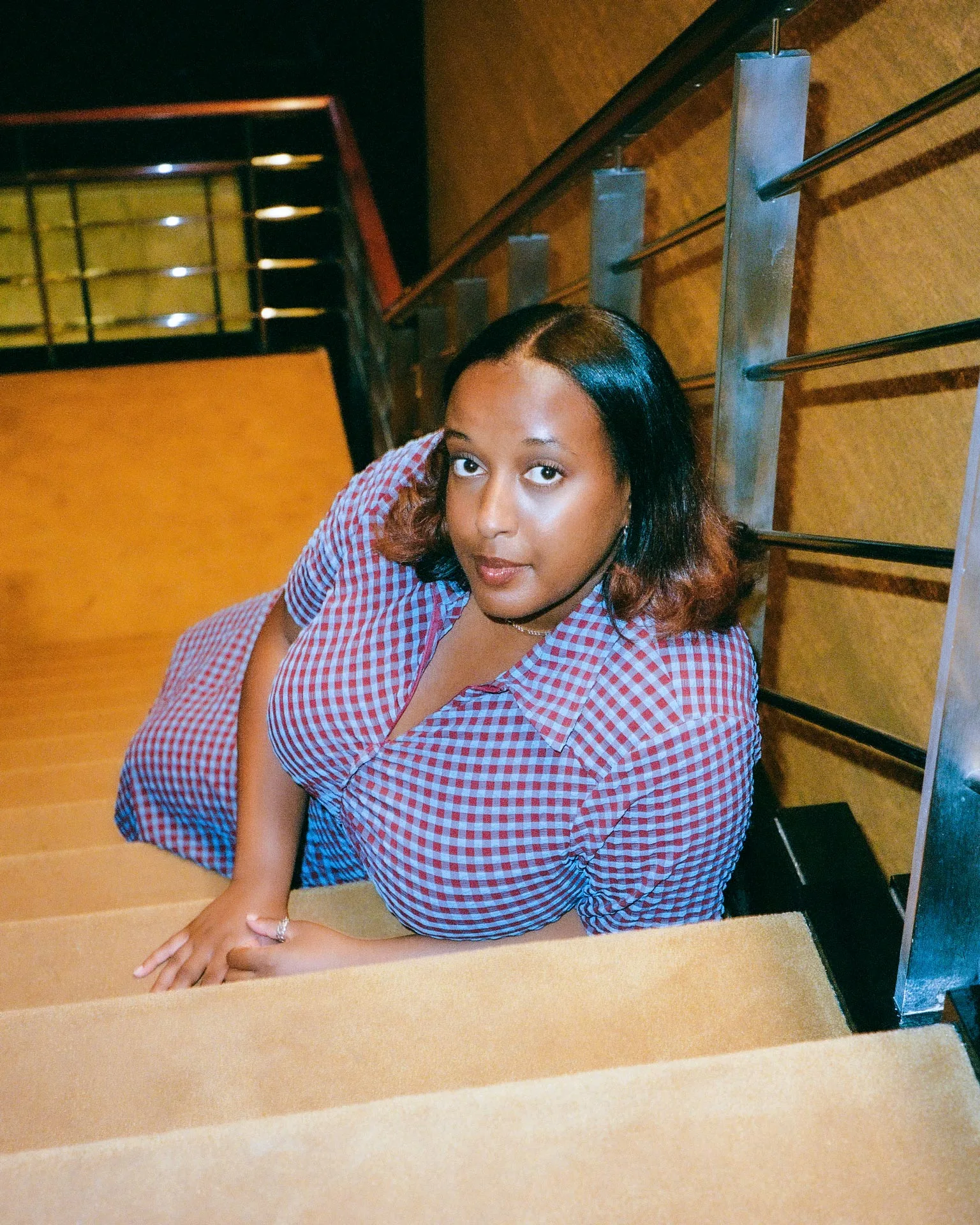Elephant Contributor Folasade Ologundudu speaks with the director of NEW INC, the New Museum’s cultural incubator, about her directorial role, her personal history, and her visions for the future of NEW INC.

Sade Ologundudu: So, what is New Inc and what do you do as the artistic director?
Salome Asega: NEW INC is the New Museum’s cultural incubator founded in 2014. We support a community of about 100 practitioners each year across art, design, technology, science, architecture, and more. We support misfits, who don’t neatly fit into any one discipline, and are working on things that are new, hybrid, or yet to be named. NEW INC offers this community four core offerings: professional development, mentorship, community programs, and a shared workspace.
Since I’ve come on as director three years ago, we’ve started to introduce a public presentation opportunity. NEW INC was this secretive community of creative people working in the nooks of the new museum, and it was important for me to make sure that there was a public component that people really got to see and understand what the people in our cohort are working on. As director, I manage a team of seven brilliant people each of whom works on some core component of our offerings.Whether it’s our annual open call public programs or our annual festival demo, I oversee all aspects of our program.
SO: What’s your professional background and how did you come to do the work you’re doing today?

SA: I started as an artist and I’m actually an alumni of NEW INC. So this is a full circle moment. I’ve always worked with emerging media and technology. I’ve always done it through my installations or sculptures. I’ve always produced them through participatory practice.
I was speaking at the Walker called IO and someone from the Ford Foundation asked if I could do some consulting work to better understand the landscape of art and technology and what role funders can play.
I did that consulting project which ended up turning into me working for four years at the Ford Foundation as a technology fellow where I was supporting not only Ford but other foundations and thinking about how to support artists working with technology. It was through that experience that I remembered I miss working directly with artists. Then this job opened at the New Museum: I went for it and I’ve been lucky to be there for three years now.
SO: Being able to experience that full circle moment has probably impacted your career in a really interesting and dynamic way.

SA: So much of what I was working on when I was a member was with a collective of artists who were starting a non-profit organization called Power Plant, an organization that works with mid-career and established artists to teach teenagers and young people technology skills, from how to use Adobe Creative Suite to how to build a website to how to create your own training data set for AI.
To have gone on my own journey and worked with so many arts organizations, to come back and share what I know with a community of artists feels really special. It’s a reciprocity: because you gave me so much I can now give back.
SO: In your current role, how would you say you’re thinking about the field of a non profit and a cultural space and an educational hub? What’s happening in the field at large, and what are some of your insights into the industry as a whole? Where does NEW INC sit within that ecosystem and what are your considerations of where the industry is right now?
SA: Since moving through the pandemic, I think artists are asking (rightfully) for more from the institutions that serve them. I remember when I first joined NEW INC, we did a values jam where we assessed NEW INC’s current values and then drafted new ones. It was an interesting process to see the people in our community shift to values that centered cooperation, collectivity, and justice.
I think that’s a mandate, a roadmap for us as a team; how do we operationalize the values that the people in our community are moving with? I’ve started to think about: how do you incubate the incubator?
SO: Absolutely. Every arts institution should be responsive to what other things are happening within the industry at large, right? In the world as well.

SA: One of the most world-opening pieces of advice I got when I was very early on in my career—my early 20s—was like, every policy is just a Word document, it’s totally editable. Nothing has to be the way it is, you can always change it.
SO: Outside of that full circle moment, as an artist now leading an organization, what would you say are some of the earlier life experiences that led towards the work you do?
SA: I grew up in Las Vegas to Ethiopian American parents, and I had uncles who really wanted me to pursue something in technology. I had uncles and aunts, who were studying computer engineering and would, for fun, have me take apart a computer and put it back. Like it was a puzzle.
SO: Wow, I love that.
SA: They would send me floppy disks with their video games on it that they were making in school as part of their programming classes. And they would ask me what worked and what didn’t work.
I had this creative exposure to technology that was playful and fun. My uncles do a really good job of not making it feel intimidating. Playing the games and seeing how they were able to write stories using code was so interesting to me, and I didn’t even know that could be a job they modeled for me.
I think that very early on, my mom would say I was brainwashed into working in this space. I did some traveling when I left undergrad. But I did my undergrad at NYU. I studied socially engaged art. At that time I was really interested in participatory action research and design and the role of artistic movements and social justice.
I thought for sure I would work for an organization that commissioned public art works or make public artwork. I did a trip where I went to Ethiopia and traveled the Middle East and came back to the U. S. And in that experience I met so many incredible artists who were doing important things in their communities.
And I was like, how do I connect all these people who are working in different geographies and regions? For me, technology was that answer. I was like, oh, I need to build some kind of web platform where people can share recipes for how they’re doing community work. And so I started the process of building a website.
I did my MFA at Parsons in a program called Design and Technology, where I ended up teaching for five years after. I was exposed to other technologies that I didn’t even know I could get my hands on, so I was experimenting with virtual reality and augmented reality. I was building apps. I was doing a lot of things with physical computing, like making kinetic sculptures. And my mind was completely blown.
It had a tremendous impact on my studio practice. I started to make more interactive installations that really is my early trajectory. I credit my uncles, but then I gained so much confidence when I was at Parsons in grad school.
SO: In the work that you’re doing currently, as you’re thinking about how your past has influenced your present and potentially your future, in this moment of your work and the things you’re doing on a regular basis, what are some of the things that are inspiring you?

SA: I’m inspired by the NEW INC members each year. I think it takes incredible vulnerability and trust in oneself, to say I’m going to go out on a limb and try to start something myself, whether it’s sustaining your own studio practice or working with a collective to start a business. I feel so proud to be part of a community of people who are dreaming up alternative futures and know that we deserve something better. I get weepy at work a lot because I’m just like, yeah, you’re amazing.
SO: I love that.
SA: NEW INC has an annual event called Demo Day, which in the past was an evening length program at the New Museum where a select number of our cohort members could present what they had been incubating with us all year long. And the audience was mostly invite only. It was writers, curators, philanthropists, and investors. And so when I came on, I started this festival called Demo Festival (I dropped the day).
SO: Yes, I went.
SAe: You saw it! It was The Invention Program.
SO: I went to DemoFest this year and it was incredible.
SA: So yeah, that was the one thing I really wanted to start when I joined.
SO: I love it. It was the talks, the art, the entire space of being able to activate in such an interesting and dynamic way. And I think WSA is just a wonderful space.
SA: Yeah.
SO: Was this year the first year?
SA: Speaking of prototyping, I didn’t want to go fledged into a festival, and so I breadcrumbed my way there. We went from an evening length program to a kind of all-day program and made it a public program instead of invite only. And so in that process I learned a lot about who would come to an event like this. And then the next year we did a more festival format, so it was three days. All the talks are at the New Museum, but I made partnerships with five spaces across New York City to host five exhibitions that align with our five tracks. It was sprawling: maybe you come to the New Museum as home base, you hear a talk, you get inspired by an artist, and then you take a short walk to a secondary venue to see the work in context. Last year, through the support of WSA, we were able to do a much more robust festival with two stages and one giant exhibition. Everything was housed in one location.
SO: As opposed to being in like sort of satellite spaces in different places.
SA: Yeah. Which I think worked a lot better because we were able to just keep the energy all in one place, but also for the track exhibitions. You could start to see some of the alignment. It starts to show threads that maybe you weren’t able to see when, having to go to five different satellite spaces.
SO: In terms of your day to day work, what projects are you working on currently (that you can speak of) that you’re excited about or that you think are pretty interesting or anything in particular that you feel will be really generative or something that is going to resonate with people a lot? Is there anything on your plate that is particularly exciting at this moment?
SA: We are hosting our annual Creative Science dinner. And this is something I started in 2021, and it’s just grown and grown. It’s an annual moment to convene the arts and science and research community in New York city. The first year I hosted a dinner at Honey’s where I commissioned three artists in our program to make activities around interspecies relationships.
The meal was very much inspired by things we could eat with an animal friend. There was some poetry and performances and a lot of fun. It grew into the second year where we partnered with Ace Hotel Brooklyn and we partnered with Serpentine, also in London.
Serpentine has a synthetic ecologies lab that has a lot of alignment with the arts and science work we do. And then we worked also with Chef Angela Dimiuga who then was a mentor in our program. And we hosted a 13 course dinner that we called Microbial Corral. That was all about bacteria.
And then last year we worked with Yemi Amu, who runs an aquaponic farm called Oko Farm on the Williamsburg waterfront. We hosted a dinner about circularity and water. We actually ate things from the farm, including—which I didn’t know you could eat—the fish that are part of the aquaponic system.
So we had some grilled fish on her farm. It’s beautiful. The city completely slows down and it’s unbelievable that this exists in New York. This year we’re working on a dinner on the rooftop of an arts organization called Noosphere in Greenpoint. Their rooftop is interestingly situated between a wastewater treatment plant, a metal recycling plant, and a general city recycling plant. And this rooftop is triangulated between these three sides and we’re gonna host a dinner about reuse and waste. Which we’re really excited about.
And then the last thing: NEW INC has a monthly program called Work Share that has always been internal facing. This is a program where a select number of our cohort members—three to four—can present or demo works in progress and get community feedback, testing, making this more of a public program. We’re doing it for the first time in partnership with the Center for Performance Research, and we’re going to highlight three projects that are tied to performance, dance, music, or theater in their space. That will happen November 21st and it’s an early opportunity to see what people are incubating in the program.
We’ll also have our first purpose built home. We’ve been in a temporary space, while the museum is undergoing construction. And I think me and my team are all really eager to be in our new space very soon. We will be under the umbrella of the museum, which we’re excited about.
Words by Folasade Ologundudu





